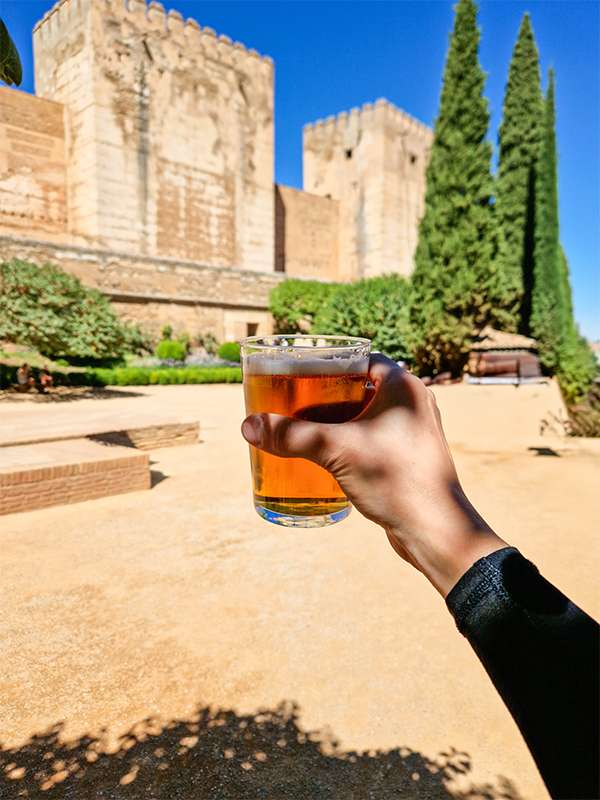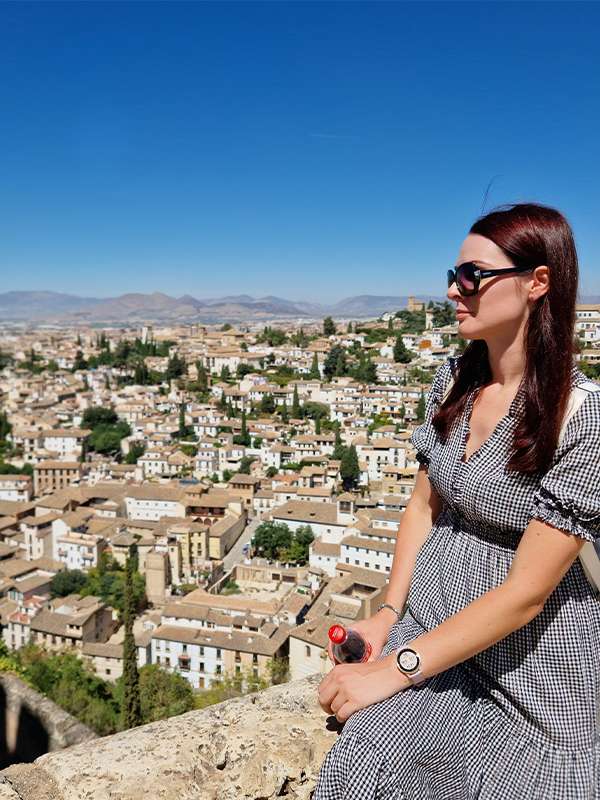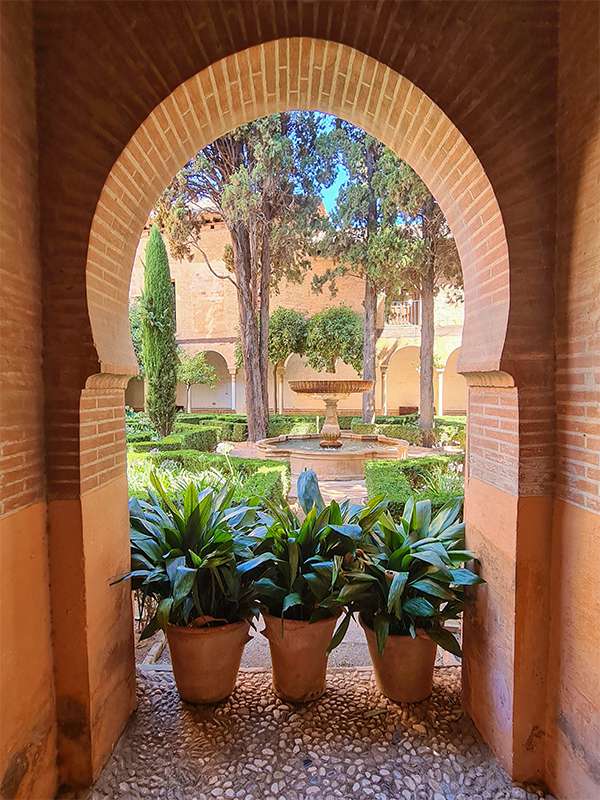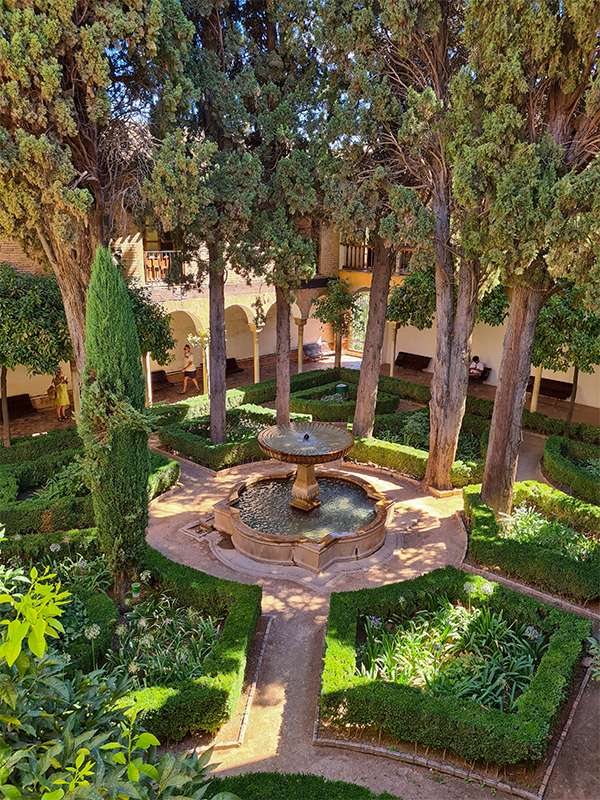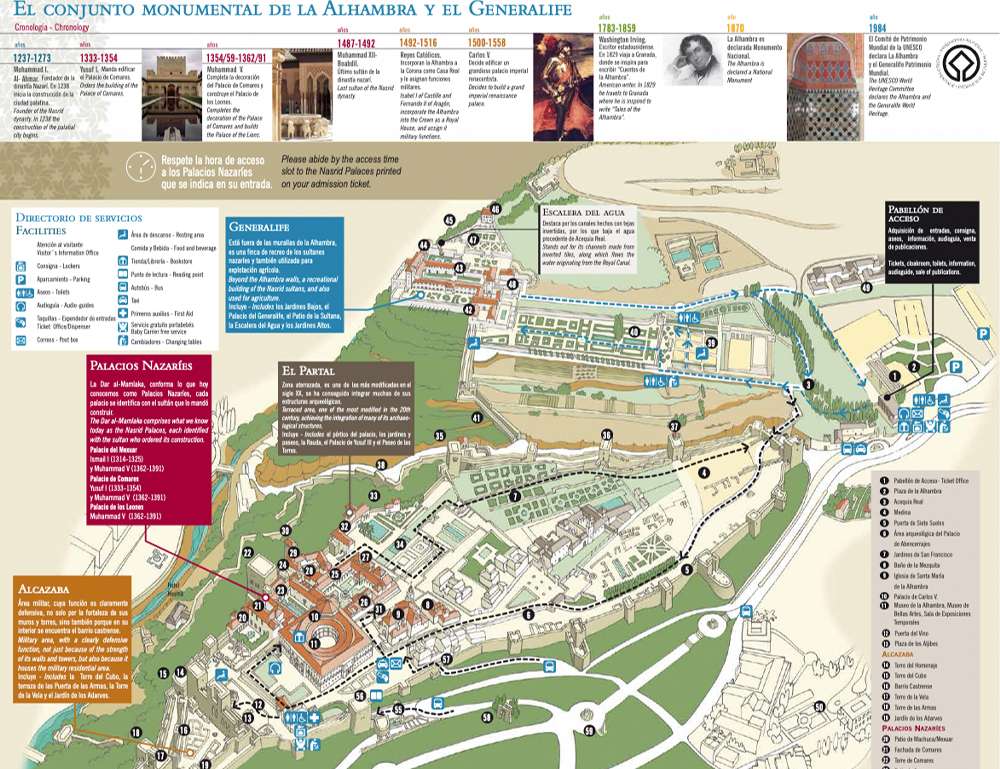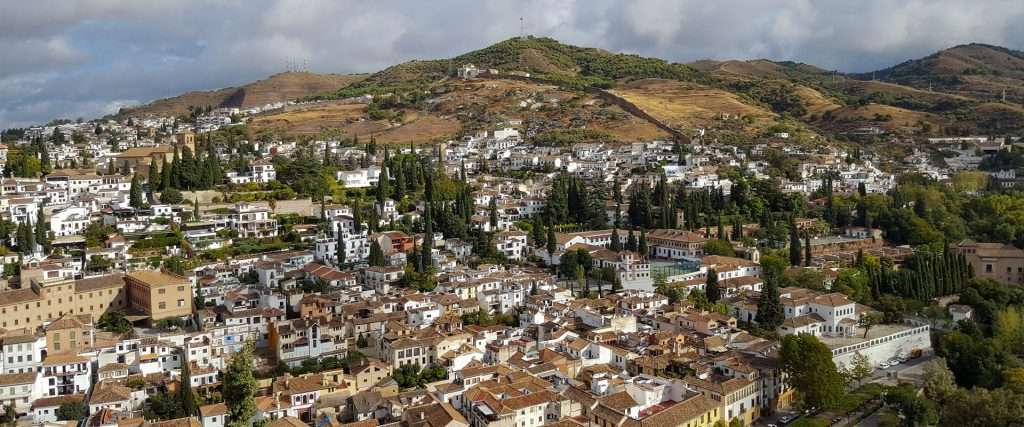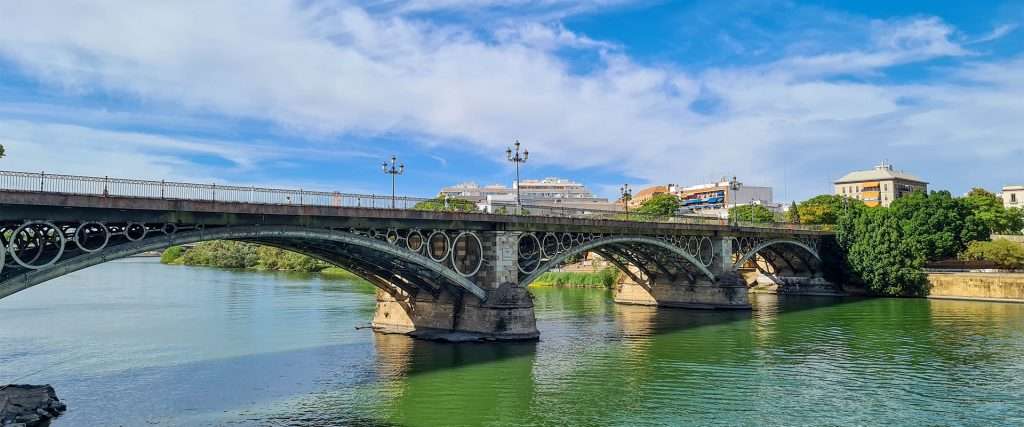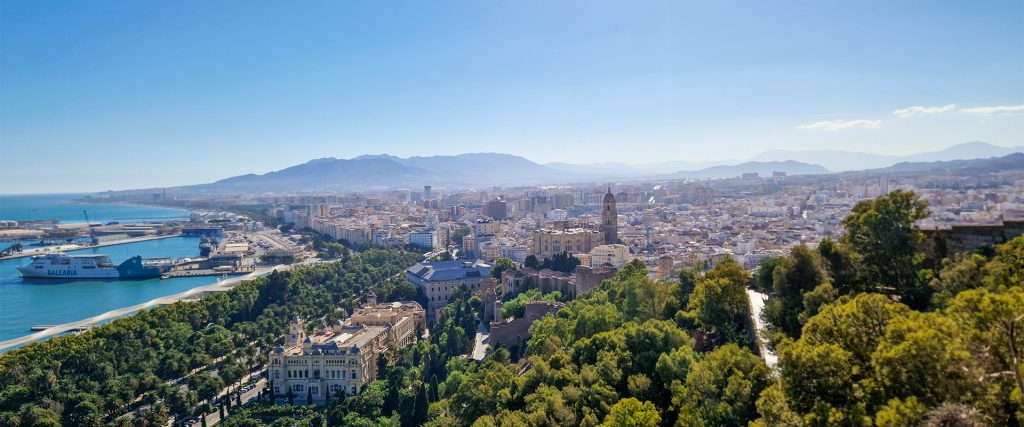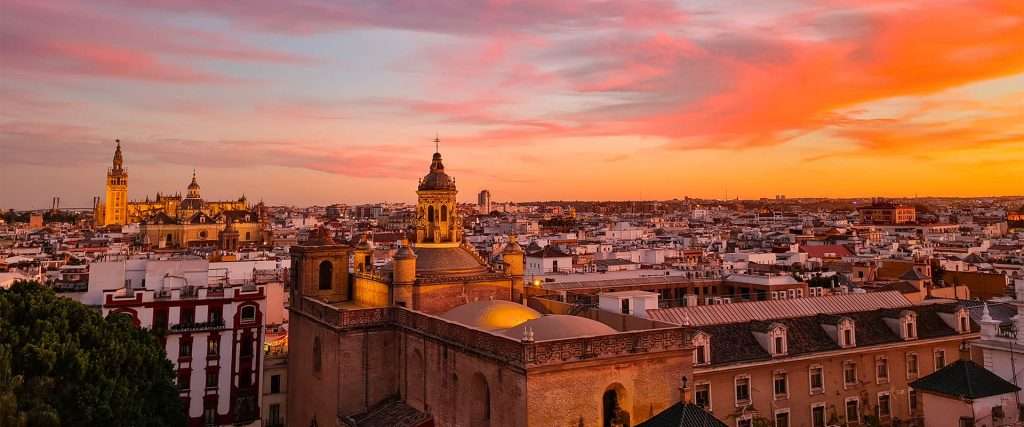Visiting the Alhambra is one of the absolute highlights of any Andalucia itinerary. This UNESCO World Heritage Site in Granada is one of the most famous landmarks in Spain, and for a good reason. With its intricate Moorish palaces, fragrant gardens, fortress towers, and sweeping views of the city and Sierra Nevada mountains, the Alhambra offers a true glimpse into the region’s layered history. It feels like stepping back in time.
I’ve visited the Alhambra twice now: once on a quick trip, and again during a slower-paced summer visit. Each time, I was just as awed by its beauty, detail, and atmosphere of this extraordinary place. But here’s the thing: visiting the Alhambra isn’t as simple as just turning up at the gate. Tickets often sell out weeks in advance, and the site is huge, so you’ll want to go in with a plan.
This guide will walk you through everything you need to know about visiting the Alhambra. From how to get there, what to book, and tips to make the most of your time at this remarkable palace.
Did you know?
The name Alhambra comes from the Arabic al-Ḥamrāʼ, meaning “The Red One”, a nod to the red clay of the hill it stands on. In the 1820s, American author Washington Irving lived inside the palace while writing Tales of the Alhambra, a book that helped reignite global fascination with the site. Despite its grandeur, much of the Alhambra was built using modest materials like plaster, wood, and tiles, showing that true beauty doesn’t always require precious stone.
Alhambra Location & How to Get There
The Alhambra is perched on Sabika Hill in Granada, southern Spain, overlooking the city and backed by the Sierra Nevada mountains. It’s one of the most iconic UNESCO World Heritage Sites in Spain and a must-visit if you’re in Andalucia.
Many people visit the Alhambra as a day trip from Málaga, Seville, or other nearby cities. Here’s how to get there:
From Malaga (Most Popular Option)
Most visitors come to the Alhambra as a day trip from Malaga, which is easy to do by train, bus, or guided tour.
- By Public Transport: You can take a direct ALSA bus from Málaga to Granada (around 1h 45m), or a high-speed Renfe train to Granada’s María Zambrano station. From there, catch local bus C30 or C32 or taxi/walk up to the Alhambra entrance. Book your tickets here
- Organised Day Tours: If you’d rather not deal with the logistics, several companies offer Alhambra tours from Malaga that include return transport, skip-the-line access, and a guide. These are great if you’re short on time or prefer a more structured visit
As Part of an Andalucia Itinerary
Visiting the Alhambra is also a popular highlight on an Andalucia road trip. It fits perfectly between Seville, Córdoba, and Ronda.
- By Car: There’s a large official parking lot (Parking Alhambra) just a short walk from the main entrance. Since the Alhambra grounds and surrounding areas are pedestrianised, it’s best to leave your car there and explore on foot. Book your rental car here
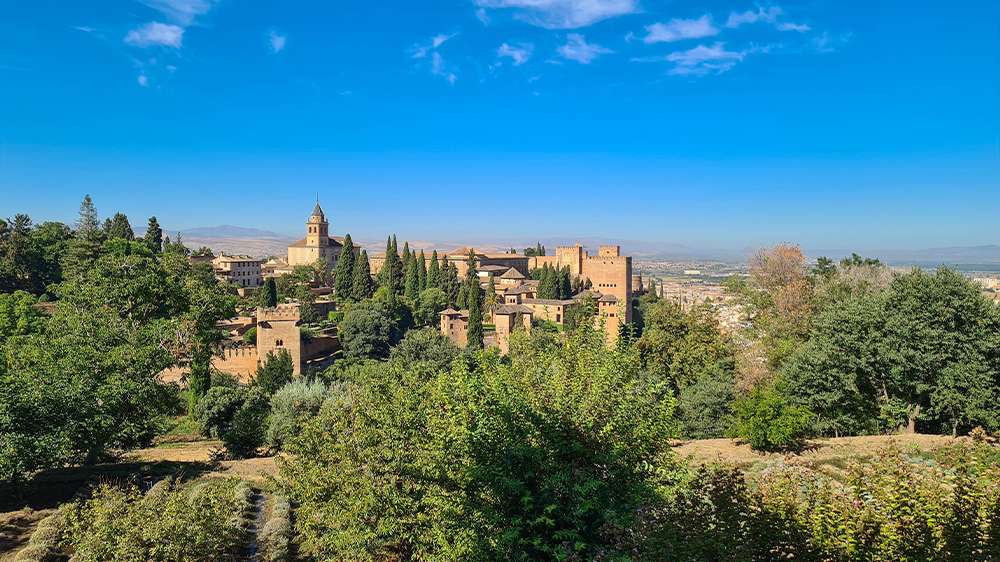
Visiting Alhambra: Guided or Independent?
You’ve got two main options:
- Visit on Your Own: Book your ticket online and explore at your own pace. You can also rent an audio guide or download a mobile app. Book your Alhambra tickets here
- Join a guided tour: Local guides bring the Alhambra’s rich history and hidden stories to life. You can either book a guided tour of the Alhambra only or a combo day tour from your base city (like Malaga or Seville)
I’ve done both, and each has its perks. Exploring solo gave me the flexibility to take it slow and enjoy the views. But with a guide, I learned so much more, especially about the intricate Islamic art and symbolism.
Tip: Alhambra tickets are timed and often sell out quickly, especially for the Nasrid Palaces. Book early and double-check that your ticket covers all areas (more on that in the next section).
History of the Alhambra: From Fortress to Palace
The story of the Alhambra is just as captivating as its intricate walls. Rising above Granada, this iconic site has seen centuries of change, from Islamic stronghold to royal residence to a symbol of Spanish heritage. Understanding its past makes visiting the Alhambra even more meaningful.
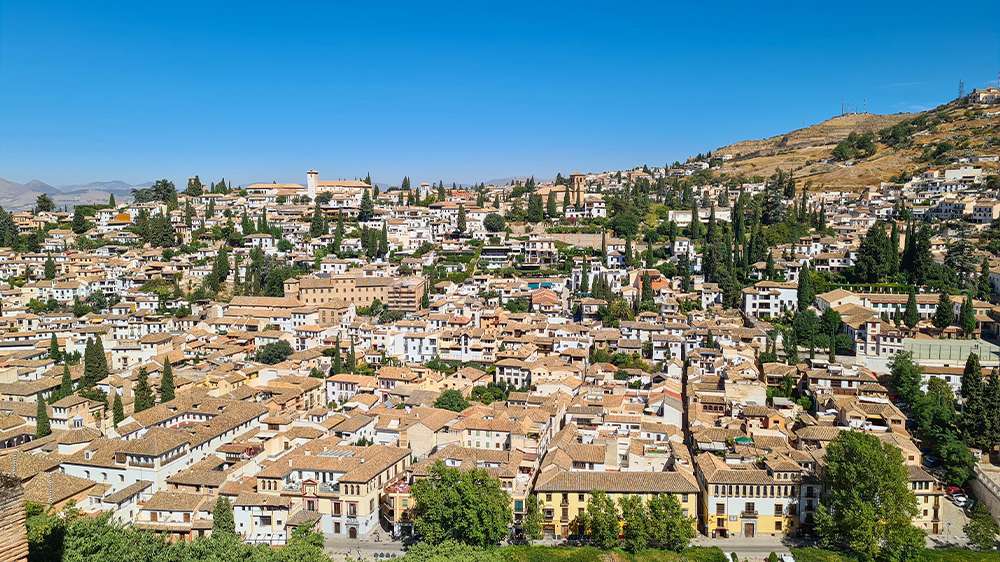
A Brief Timeline of the Alhambra
9th Century: A Strategic Fortress
The first structures on the Sabika Hill were built during the 9th century as a small military fortress, chosen for its defensive location overlooking the valley.
13th–15th Centuries: The Nasrid Golden Age
The Alhambra we know today took shape under the Nasrid dynasty, the last Muslim rulers of al-Andalus. They transformed the hill into a royal palace city, with elegant courtyards, gardens, and the iconic Nasrid Palaces. This era produced the most exquisite Islamic architecture in Spain.
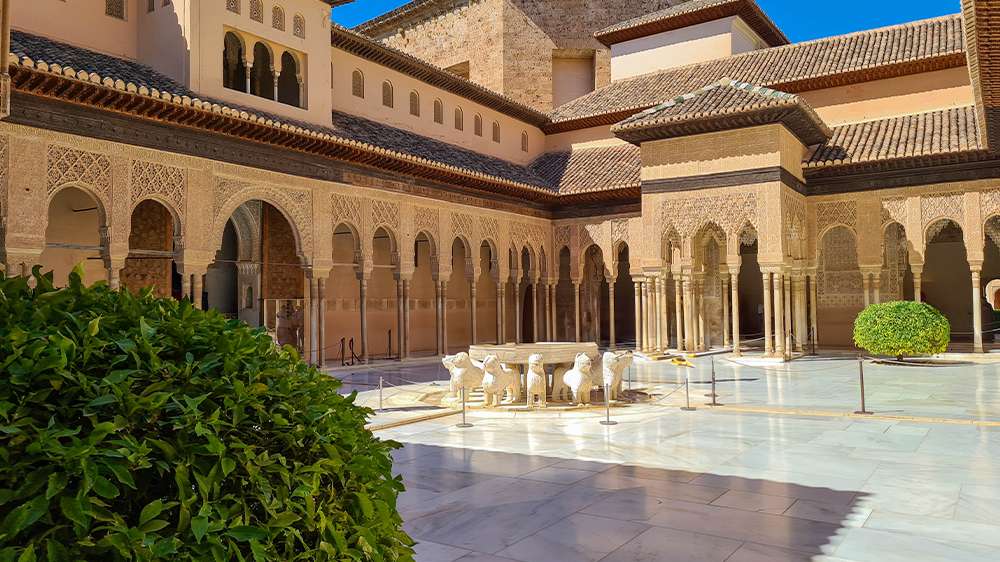
1492: The Catholic Monarchs Arrive
After the Reconquista, Ferdinand and Isabella took control of the Alhambra. They kept much of its original structure, even making it their royal residence for a time. It was here that Queen Isabella agreed to fund Columbus’s voyage to the New World.
16th Century: Renaissance Touches
Emperor Charles V, grandson of Isabella and Ferdinand, added a large Renaissance-style palace right in the heart of the Alhambra. While stylistically different, it reflects the power shift of the time.
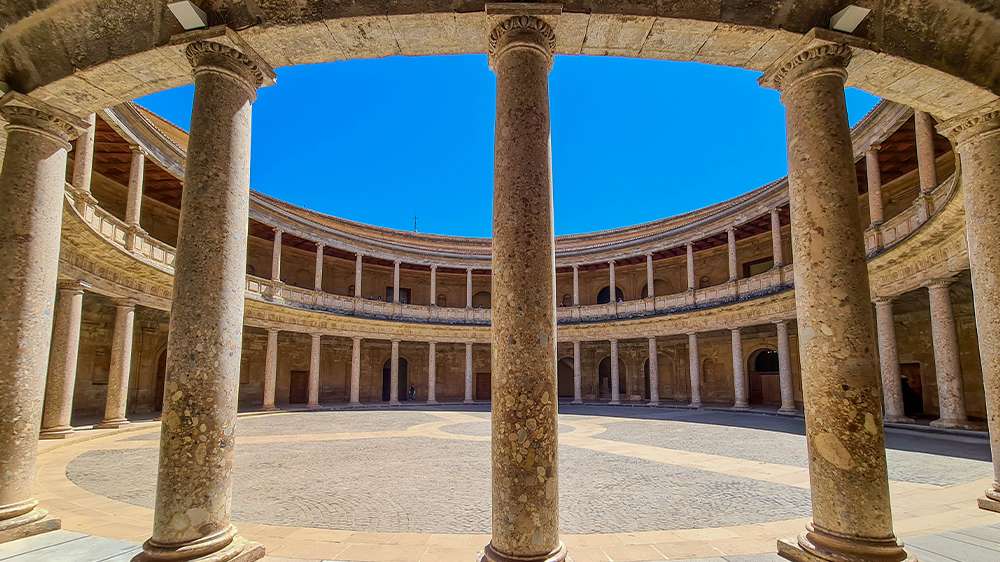
18th–19th Centuries: Abandonment and Rediscovery
The Alhambra fell into neglect for a while, even being occupied by squatters and damaged by a Napoleonic explosion. But in the 19th century, romantic travellers, artists, and writers helped revive interest. Restoration efforts began, and the site slowly returned to its former glory.
Today: A Global Icon
Declared a UNESCO World Heritage Site in 1984, the Alhambra is now one of the most visited monuments in Spain, admired for its fusion of Islamic art and Andalucian history.
Visiting Alhambra: What to See
The Alhambra isn’t just one monument. It’s a vast complex of palaces, gardens, and fortifications. Give yourself enough time (at least 3 hours) to fully explore the key areas.
Nasrid Palaces
This is the crown jewel of the Alhambra. A breathtaking series of Moorish palaces, intricate stucco carvings, calligraphy-covered walls, delicate arches, and tranquil courtyards like the famous Patio de los Leones. Entry is strictly timed; make sure to double-check your Alhambra ticket for the time slot.
There are three key parts to explore:
- Palacio del Mexuar: The oldest section, used for official business and public hearings
- Palacio de Comares: Home to the Court of the Myrtles and the soaring Hall of the Ambassadors, where the sultan received foreign envoys beneath a dazzling wooden dome
- Palacio de los Leones: A more private palace built by Muhammad V, famous for its twelve-lion fountain and intricate stucco work
Legend has it that the Hall of the Ambassadors is where Queen Isabella and King Ferdinand met with Christopher Columbus before his 1492 voyage.
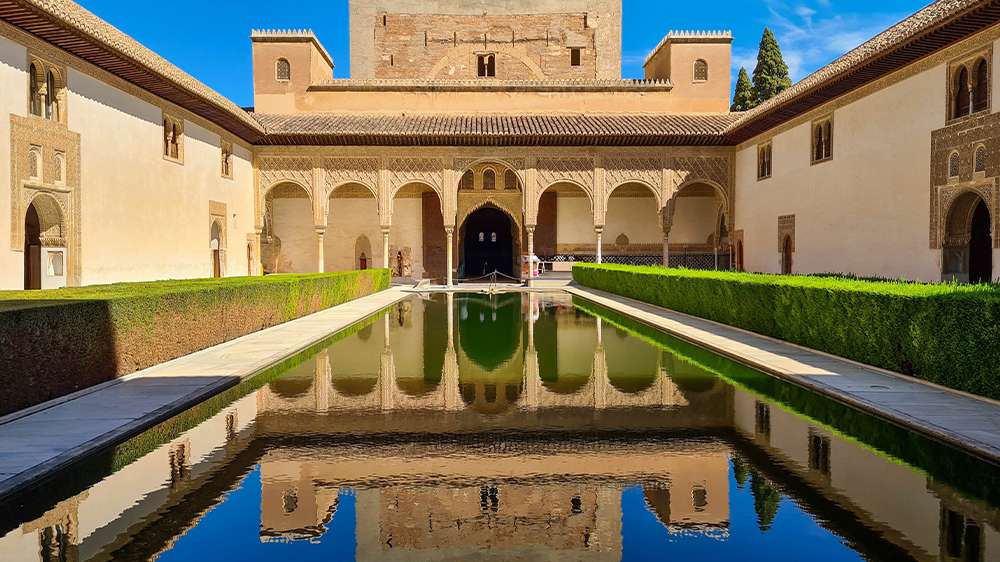
Alcazaba
The Alhambra’s oldest part, a fortress dating back to the 1200s, was built on the remains of a previous Muslim stronghold. It was used to guard the royal city and its people. Climb the Torre de la Vela (Watchtower) for sweeping views over Granada; this is where the Christian flag was raised in 1492 after the Reconquista.
If you’ve been to Malaga’s Alcazaba, think of this as its mightier, mountain-framed cousin: older, higher, and with views that will stop you in your tracks.
Don’t miss: The Adarves Gardens at the Alcazaba entrance. Quiet, green, and perfect for photos overlooking the city.
Generalife Gardens
Generalife was the Nasrid sultans’ summer retreat, a peaceful escape from the formalities of court life. The name likely comes from Jannat al-Arif, meaning “Garden of the Architect.”
With tranquil water features, terraced walkways, and flower-filled courtyards, it’s a beautiful contrast to the grandeur of the main palace. The Patio de la Acequia (Courtyard of the Water Canal) is especially stunning, with its long reflecting pool and cypress hedges.
Fun fact: Though it looks ornate, the Generalife was built using modest materials like wood and plaster. It is a reminder that beauty doesn’t always need to be extravagant.
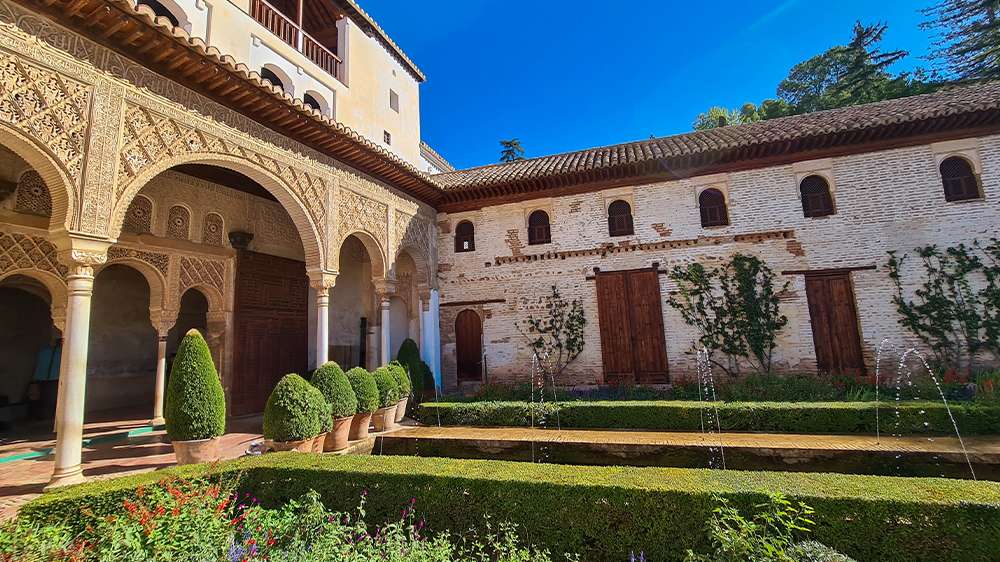
Palace of Charles V
This Renaissance palace stands out from the rest. Its round courtyard and Roman-inspired columns contrast sharply with the surrounding Moorish style.
Commissioned by Charles V in the 16th century, it symbolised Christian power and the triumph over the Nasrid dynasty. The palace was never fully completed and was even used for gunpowder storage for years.
Today, it houses the Alhambra Museum and the Fine Arts Museum of Granada. This is a great stop if you love architecture or want to escape the heat.
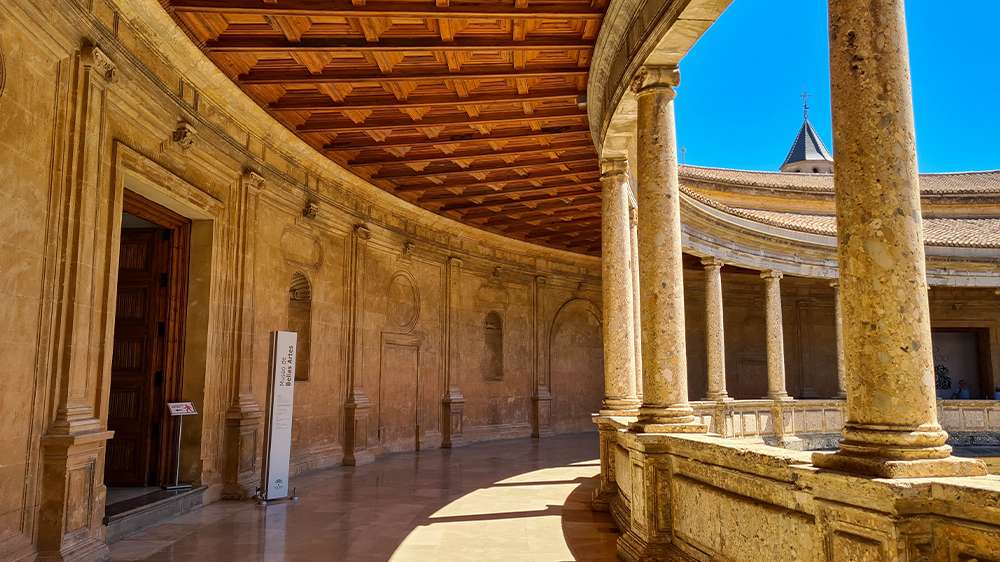
Medina and Surrounding Grounds
Don’t rush through the less-visited areas, including ruins of homes, baths, and workshops that once served the palace city. The peaceful paths and fountains are perfect for slower moments.
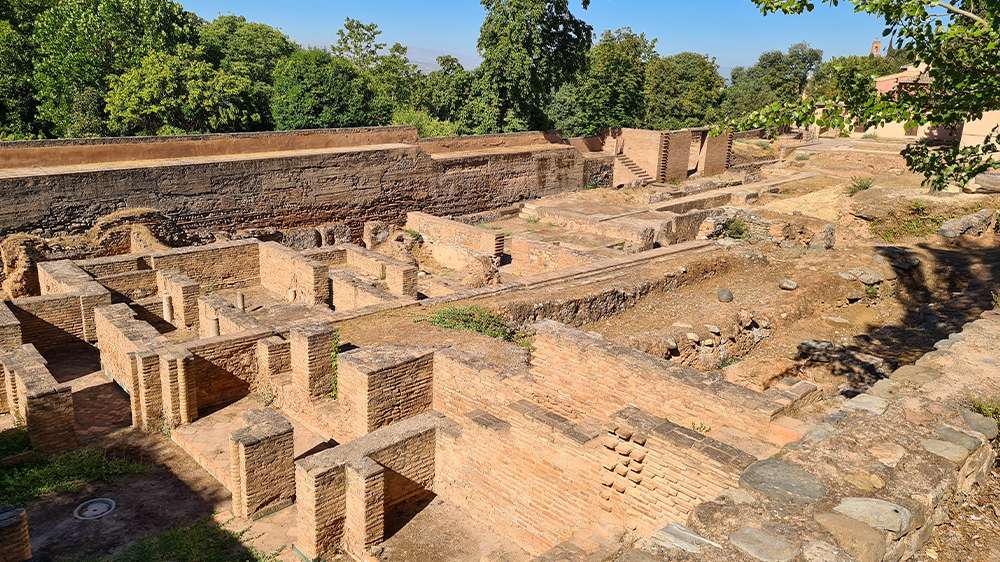
Partal Gardens (Jardines del Partal)
One of the most peaceful corners of the Alhambra, the Partal Gardens include pools, pathways, and the oldest surviving palace structure. It was built by Muhammad III in the early 14th century.
Wander through olive trees and flowerbeds and enjoy views over the old walls and towers. It’s a lovely transition between the more crowded palace sections and the open views beyond.
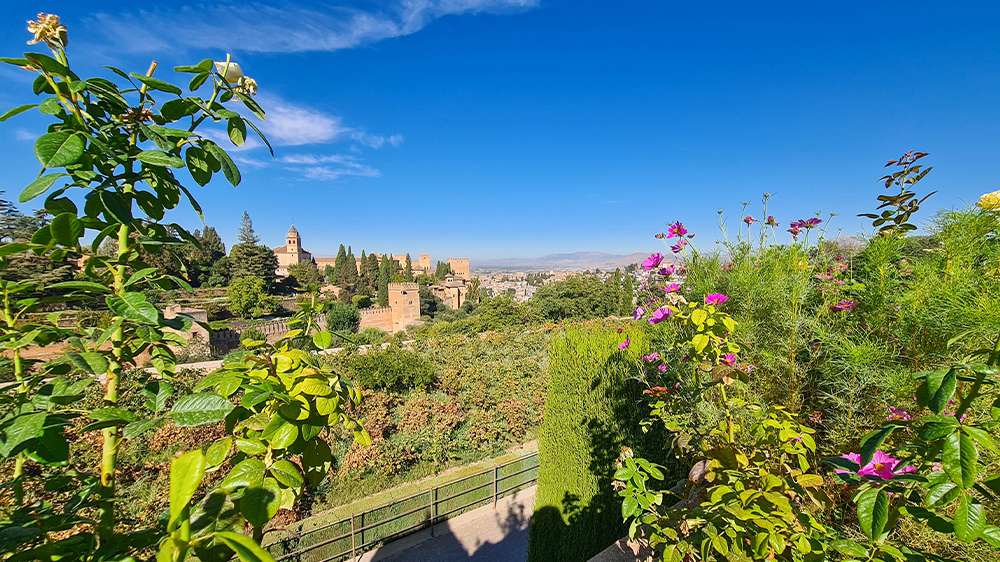
Alhambra Tickets: Everything You Need to Know
Booking in advance is essential! Tickets often sell out weeks ahead, especially in high season.
Types of Tickets
- General Day Ticket: Includes all major areas: Nasrid Palaces, Generalife, Alcazaba, Partal Gardens, and Medina. Make sure your time slot includes access to the Nasrid Palaces
- Night Visit Ticket: A special evening experience for either the Nasrid Palaces or Generalife Gardens (sold separately). Great for photos and a quieter atmosphere, but you’ll miss the views
- Gardens + Alcazaba Only: A cheaper ticket if Nasrid Palace slots are sold out, or you’re short on time. Still includes gorgeous views and key sections like Partal and Generalife
- Combined Tickets: Some tickets include entry to other Granada sites like the Albaicín or the Dobla de Oro monuments. Worth it if you plan to explore more of the city
Where to Buy Tickets
- Official website: tickets.alhambra-patronato.es (best prices, no commission)
- Authorised resellers: Viator, GetYourGuide, Civitatis — useful if the official site is sold out or you want a guided tour
- At the ticket office: Risky! Only a few same-day tickets are released each morning and usually gone by 8 AM
Alhambra Opening Hours
- Day visits:
- Night visits (limited days):
- 15 Oct – 31 Mar: 8:00 PM – 9:30 PM
- 1 Apr – 14 Oct: 10:00 PM – 11:30 PM
- Closed on 25 December and 1 January
Where to Stay in Granada
If you have the time, we highly recommend staying at least one night in Granada. The Alhambra is just the beginning! Spend an evening exploring the winding streets of the Albaicín, wander through the Alcaicería market, or watch a passionate flamenco show inside a Sacromonte cave. You can even unwind with a relaxing massage at a local hammam. It’s perfect after a long day of walking and exploring all the Granada attractions.
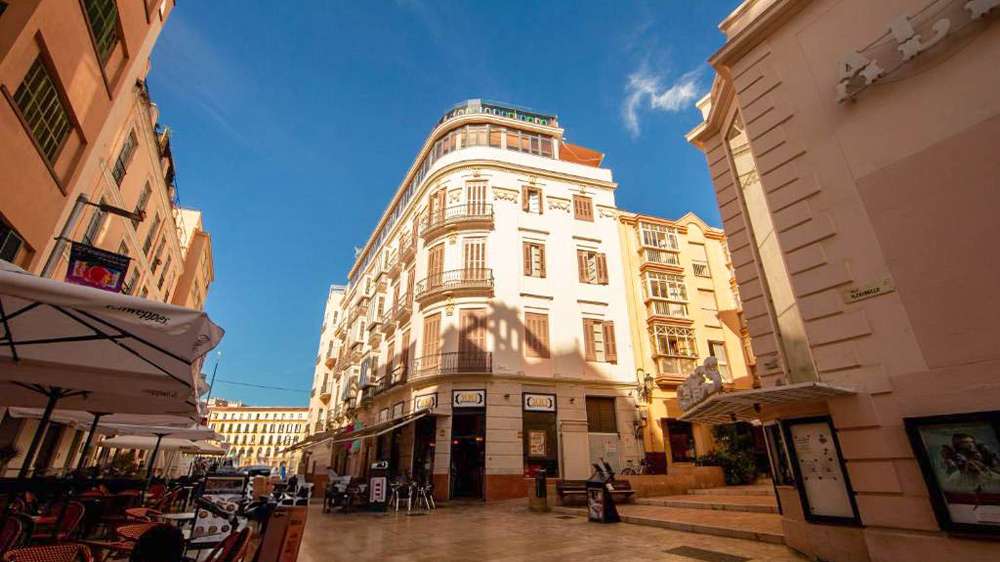
Tips for Visiting Alhambra
- Best Time to Visit: Spring and autumn offer pleasant weather and fewer tourists
- Book early: Tickets, especially for the Nasrid Palaces, often sell out weeks in advance
- Stick to your time slot: Entry to the Nasrid Palaces is timed and strictly enforced
- Bring your passport or ID: Mandatory for entry; name must match the ticket
- Allow at least 3 hours: The complex is large and deserves time to explore properly
- Wear comfortable shoes : Expect long walks, cobblestones, and some hills
- Join a guided tour or use an audio guide: Context enhances the experience
- No drones, tripods, or large backpacks: Keep your gear minimal and respectful
- Night visits are magical: Fewer crowds and beautiful lighting in the Nasrid Palaces
- Bring water: Refill stations are available; summer heat can be intense
Final Thoughts on Alhambra
Visiting the Alhambra is truly a highlight of any trip to Andalucia. From the intricate Nasrid Palaces to the peaceful gardens of Generalife, every corner of this UNESCO site tells a story. Just make sure to plan ahead, as tickets sell out fast, and there’s a lot to take in.
Want to explore more of the city? Check out our full Granada travel guide for the best things to do, where to eat, and local tips.
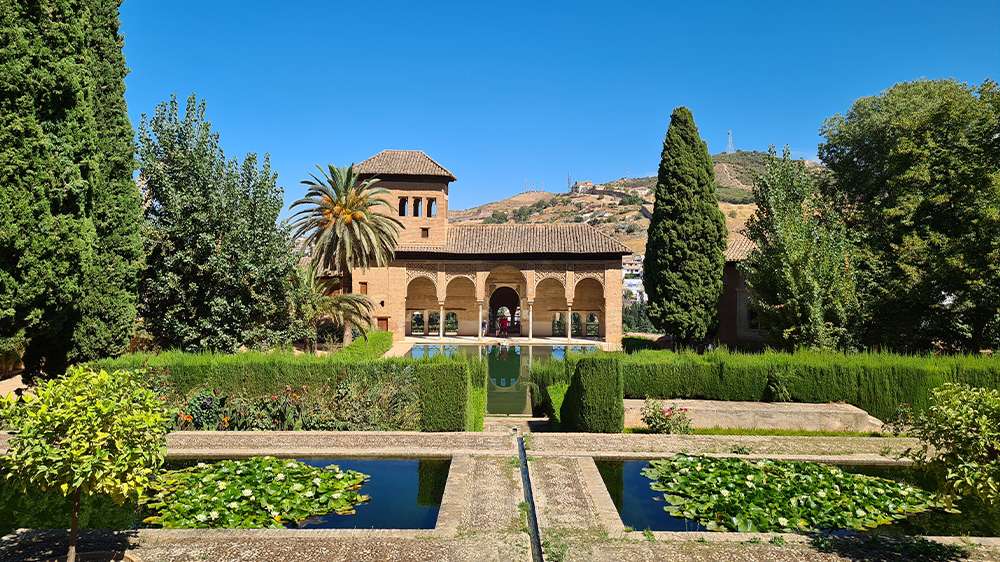
Get Inspired
The Alhambra is more than just Granada’s crown jewel, it’s a UNESCO World Heritage Site and a must-see on any Andalucia itinerary. Wander through ornate palaces, tranquil courtyards, and lush gardens that have stood for centuries. Press play to see its magic unfold and start picturing yourself walking these storied walls.

